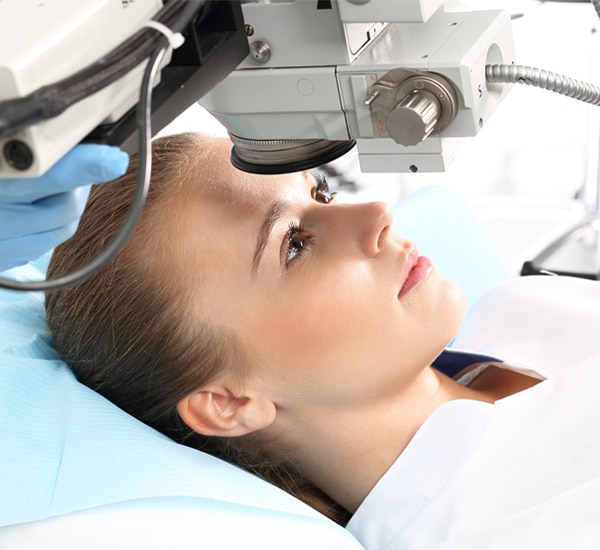
LASIK, or laser-assisted in situ keratomileusis, is a popular surgical procedure that corrects common vision problems by permanently altering the shape of the cornea with a laser. This results in improved vision and reduced dependence on glasses or contact lenses. LASIK is effective for nearsightedness, farsightedness, astigmatism, and presbyopia.
During LASIK, an excimer laser removes a thin layer of corneal tissue to reshape the cornea, allowing light rays to focus clearly on the retina. The goal is to flatten the cornea for nearsighted individuals and create a steeper cornea for farsighted individuals. LASIK can also correct astigmatism by smoothing out irregularities in the cornea.
LASIK is an outpatient procedure that typically takes 10 to 15 minutes per eye. Patients are awake during the procedure, but mild sedation can be requested. Anesthesia is administered in the form of numbing eye drops. LASIK can be performed on one or both eyes during the same session.
Frequently Asked Questions
How To Prepare For LASIK Eye Surgery?
Before LASIK eye surgery, the patient will undergo a thorough evaluation by the eye surgeon, which includes reviewing medical history and conducting a comprehensive eye examination. During the examination, the surgeon will measure corneal thickness, assess refraction, map the cornea, measure eye pressure, and dilate the pupil. After the examination, the surgeon will provide information about what to expect before and after the procedure.
On the day of surgery, it is recommended to have a light meal before visiting the doctor and to take any prescribed medications. Avoid wearing eye makeup, creams, perfumes, or lotions the day before and the day of surgery. Also, avoid bulky hair accessories that may interfere with positioning the head under the laser.
For at least three days before the evaluation, do not wear contact lenses. If wearing rigid gas permeable lenses, do not wear them for at least three weeks before the evaluation. Arrange for transportation home from the surgery location, as vision may be blurry.
What Happens During LASIK Eye Surgery?
What To Expect After LASIK Eye Surgery?
Please be aware that your eyes may feel dry, even if they do not appear that way. To prevent infection and inflammation, you will receive one prescribed eye drop and another to keep your eyes moist. These drops may cause a slight burning sensation or temporary blurring of your vision. It is crucial not to use any eye drops that have not been approved by your LASIK surgeon.
The healing process following LASIK eye surgery is typically quick. Your vision may be blurry and hazy on the first day, but most patients notice improved vision within a few days. A follow-up appointment will be scheduled 24 to 48 hours after the surgery, as well as at regular intervals during the first six months.
What Are The Advantages Of LASIK Eye Surgery?
LASIK offers numerous advantages, such as:
- Vision is typically corrected within a day after the procedure.
- LASIK significantly reduces reliance on eyeglasses or contact lenses, with some patients no longer needing them at all.
- Vision adjustments can be made in the future if changes occur due to aging.
- The use of numbing eye drops during LASIK minimizes discomfort.
- No bandages or stitches are necessary post-LASIK.

